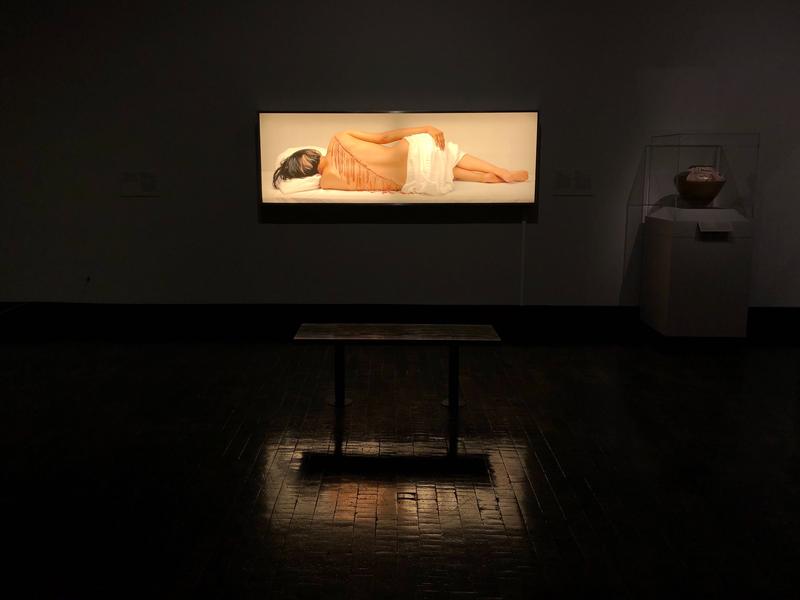
In a state without a single Native American reservation and in a city that was a stop on the Trail of Tears, a new exhibit in Nashville feels both late and on time.
The Frist Art Museum is showcasing work by Native women artists that spans eras, places and mediums.
If you’re imagining a collection of deep orange, clay pottery, you’ve got the wrong idea.
“‘Maria’ is a black-on-black painted custom 1985 El Camino,” Teri Greeves, co-curator of the “Hearts of Our People” exhibit, an artist herself and a member of the Kiowa Tribe of Oklahoma, said standing at the center of the main gallery, next to a sweet lowrider.
“It has black-on-black painting on it in reference — in deference and homage — to Maria Martinez’s black-on-black San Ildefonso pottery.”
Martinez was a Pueblo artist who became internationally known for her glossy black pots decorated with matte black designs. One of her pots sits beside fellow Pueblo artist Rose Simpson’s car. The pieces aren’t twins, but they’re certainly cousins.
According to the Frist, the show features more than 115 works of art. They range from traditional textiles, baskets, beadwork and pottery to forms like painting, sculpture, video and installation art. Some works date back to ancient times, while others are recent.
The thread that connects the works is that the artists behind them went overlooked by the art world for decades, and in some cases, centuries.
“I would go through private collections, and I’d go through public collections and collections at art museums and in anthropology museums. And, I’d see all these beautiful works,” said Jill Ahlberg Yohe, one of the show’s co-curators and an associate curator at the Minneapolis Institute of Art.
“It just became more and more apparent that all of this work that I was seeing was native women’s work.”
She decided the next logical step was to curate an exhibit that highlighted the work for what it was — art — to be shown in art galleries, rather than natural history museums. 
She and Greeves formed a board of Native women representing different nations and ages and locations. That board helped them track down unique pieces — like a storage pot made by a Laguna woman, who was born as a man.
“This is a really groundbreaking exhibition on multiple levels,” says Frist curator Katie Delmez.
She says an exhibit focusing on Native American art has been a long time coming. The museum has had two related exhibitions fall through in recent years.
“We were disappointed at first,” Delmez said. “But, now, we all feel like this is the right project for us and this is the right time for us, too.”


